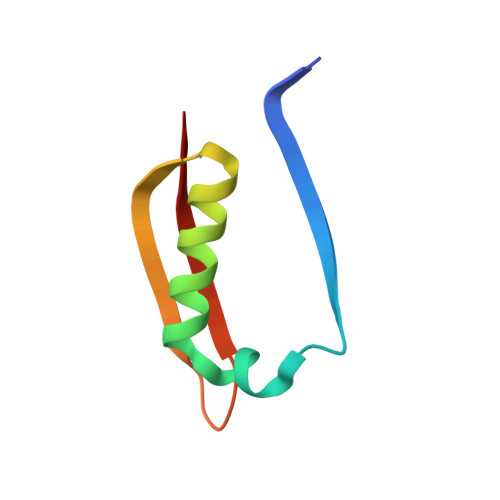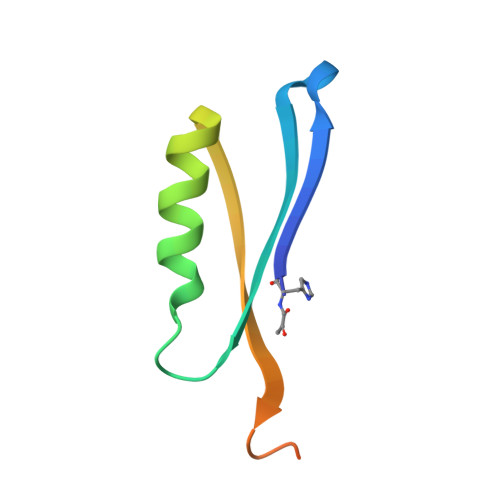Complexes of Thermotoga maritimaS-adenosylmethionine decarboxylase provide insights into substrate specificity.
Bale, S., Baba, K., McCloskey, D.E., Pegg, A.E., Ealick, S.E.(2010) Acta Crystallogr D Biol Crystallogr 66: 181-189
- PubMed: 20124698
- DOI: https://doi.org/10.1107/S090744490904877X
- Primary Citation of Related Structures:
3IWB, 3IWC, 3IWD - PubMed Abstract:
The polyamines putrescine, spermidine and spermine are ubiquitous aliphatic cations and are essential for cellular growth and differentiation. S-Adenosylmethionine decarboxylase (AdoMetDC) is a critical pyruvoyl-dependent enzyme in the polyamine-biosynthetic pathway. The crystal structures of AdoMetDC from humans and plants and of the AdoMetDC proenzyme from Thermotoga maritima have been obtained previously. Here, the crystal structures of activated T. maritima AdoMetDC (TmAdoMetDC) and of its complexes with S-adenosylmethionine methyl ester and 5'-deoxy-5'-dimethylthioadenosine are reported. The results demonstrate for the first time that TmAdoMetDC autoprocesses without the need for additional factors and that the enzyme contains two complete active sites, both of which use residues from both chains of the homodimer. The complexes provide insights into the substrate specificity and ligand binding of AdoMetDC in prokaryotes. The conservation of the ligand-binding mode and the active-site residues between human and T. maritima AdoMetDC provides insight into the evolution of AdoMetDC.
Organizational Affiliation:
Department of Chemistry and Chemical Biology, Cornell University, Ithaca, New York 14853, USA.
















